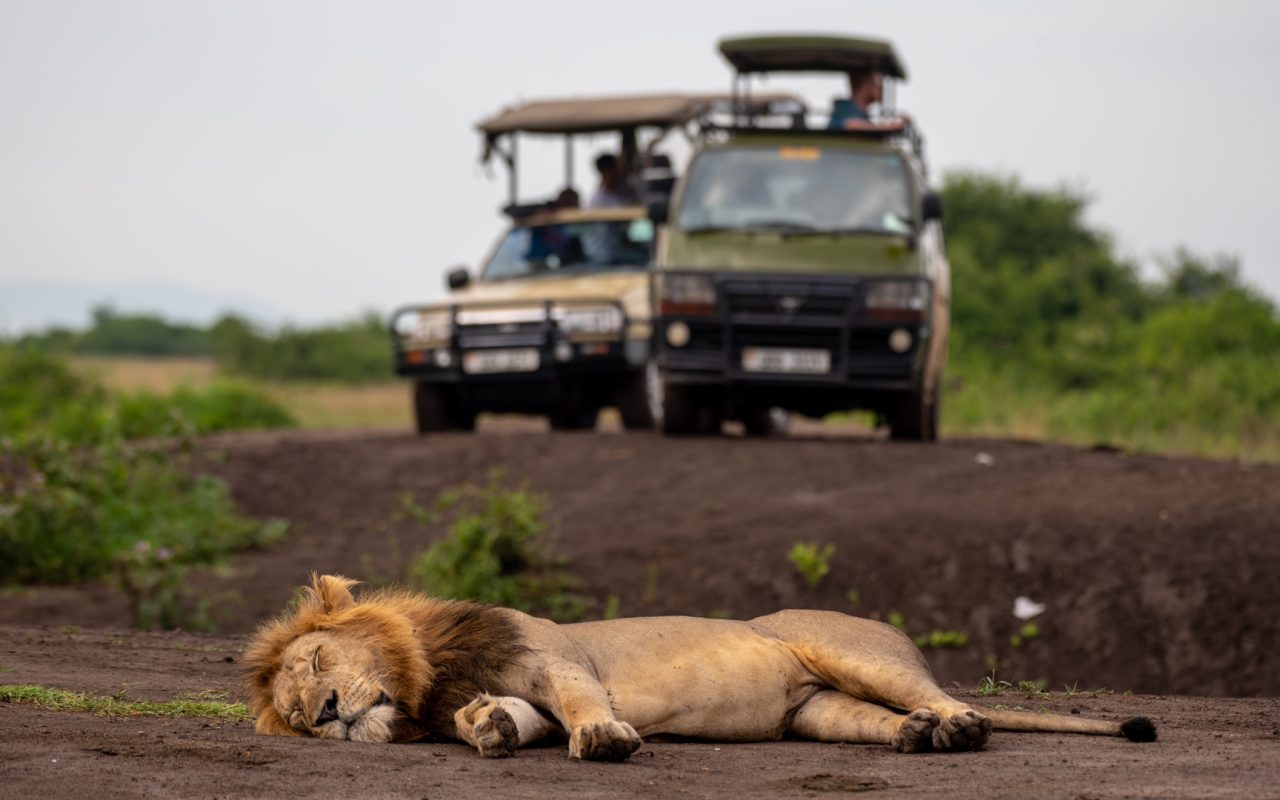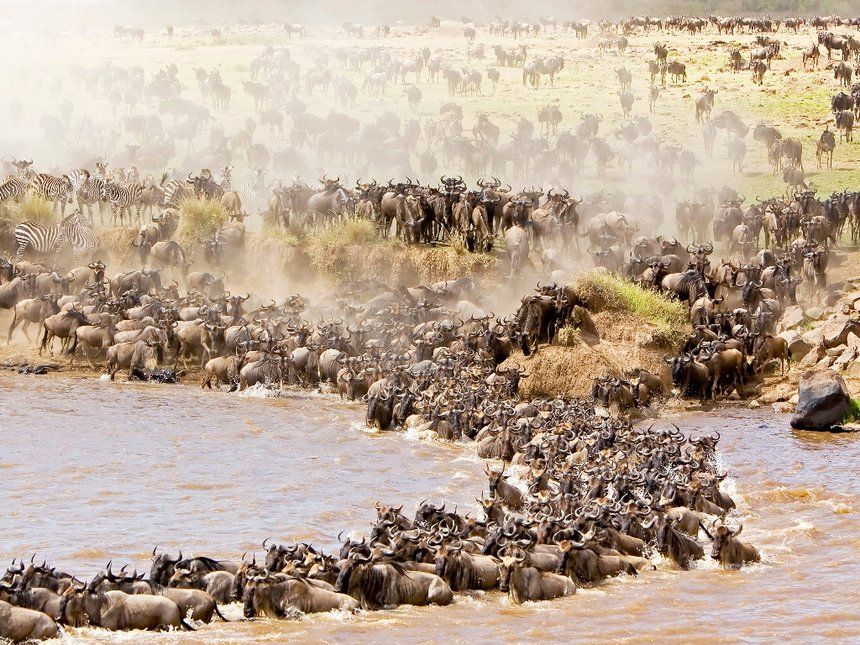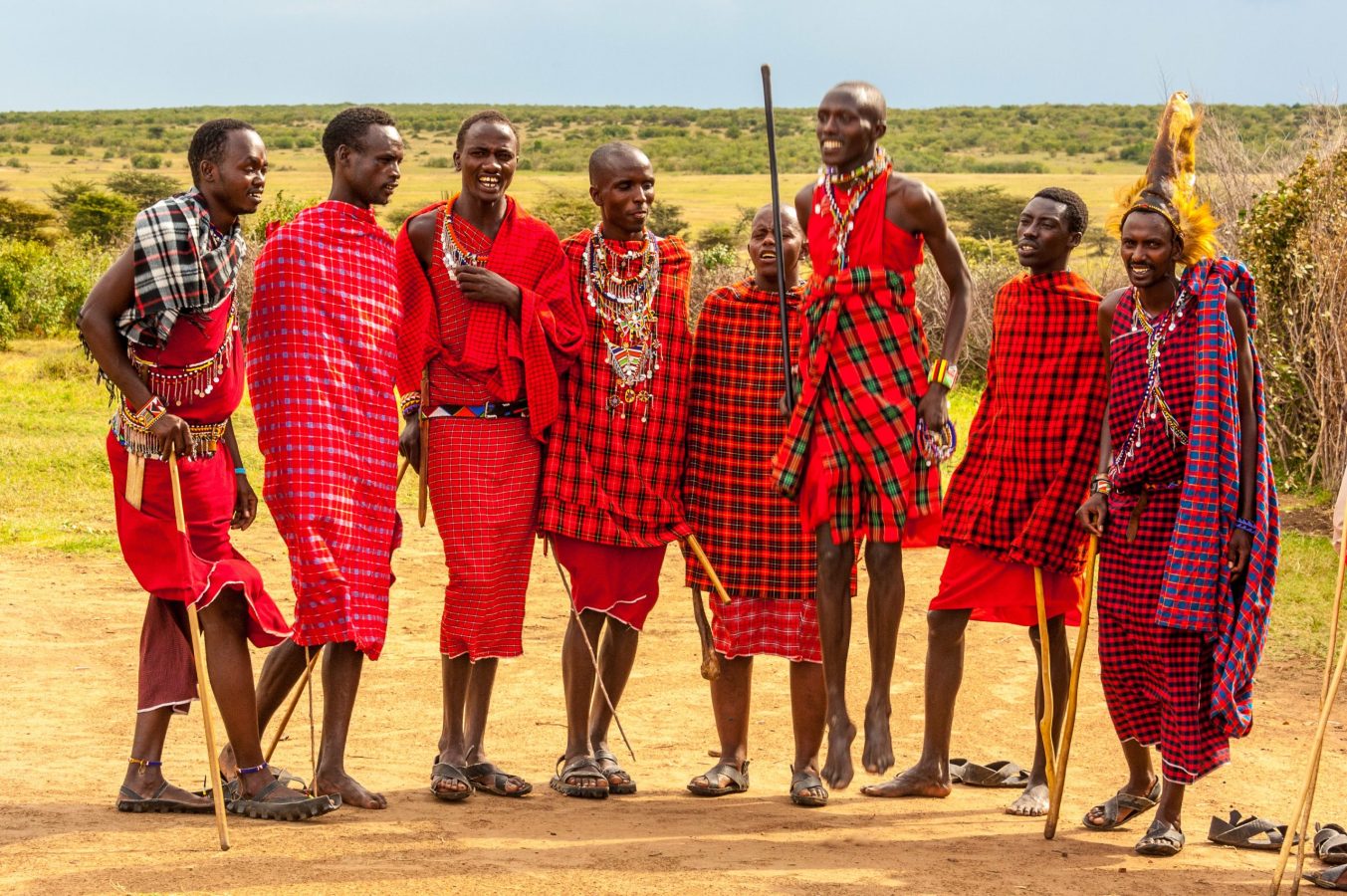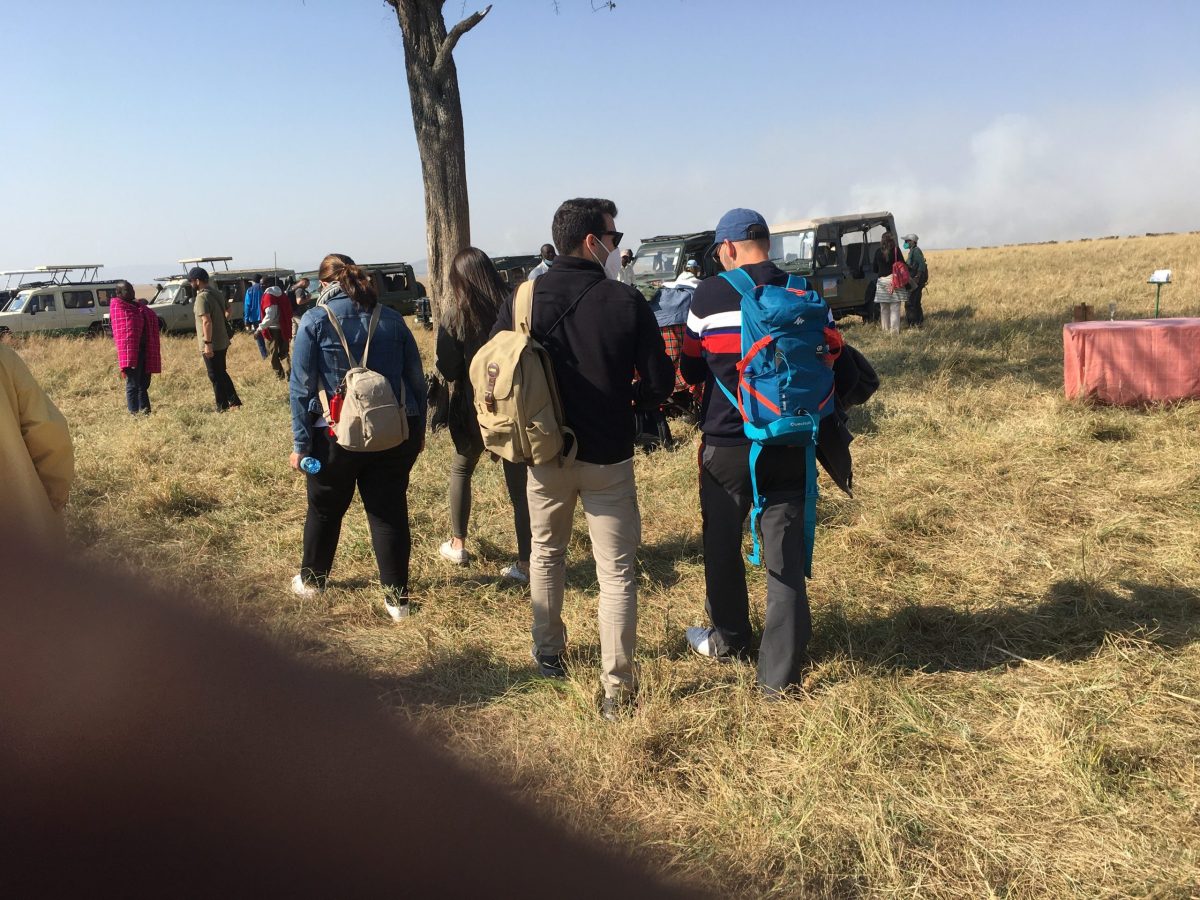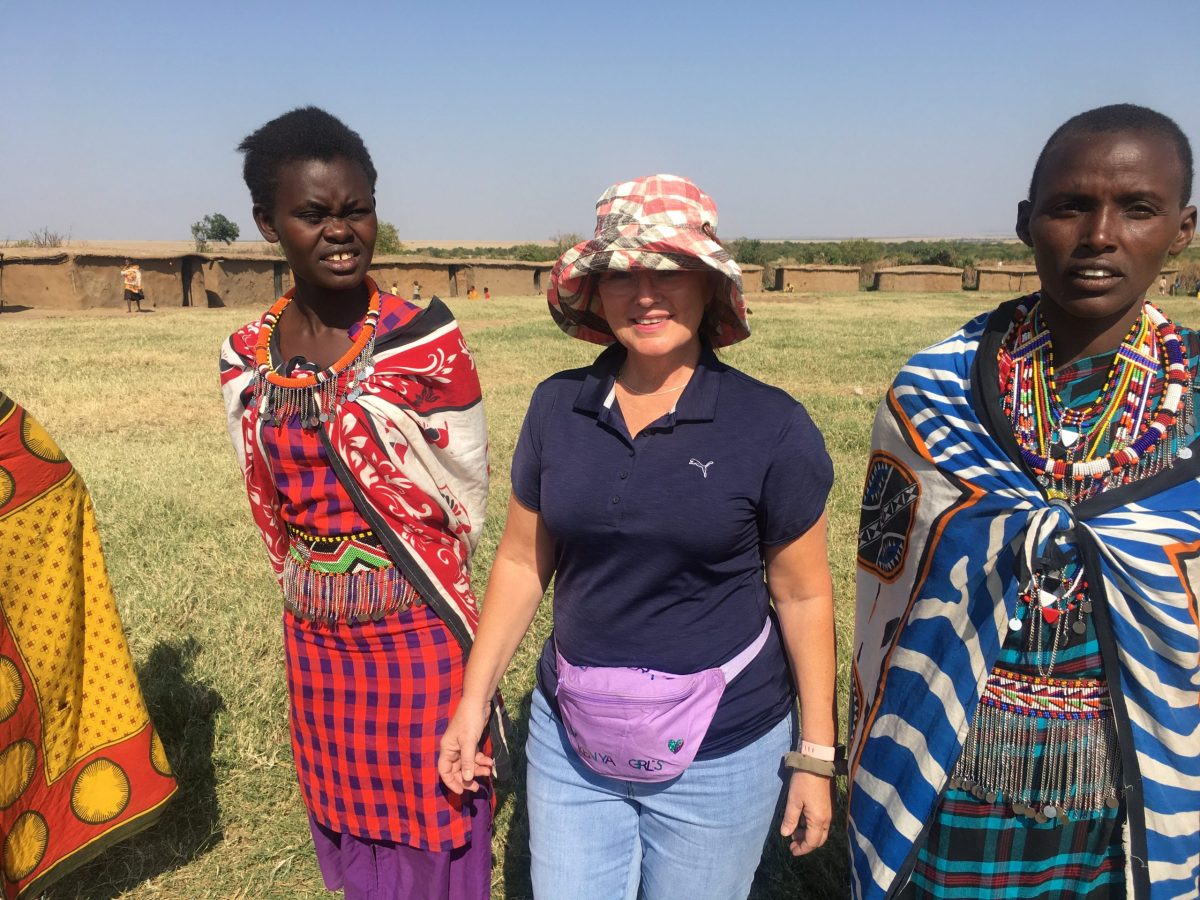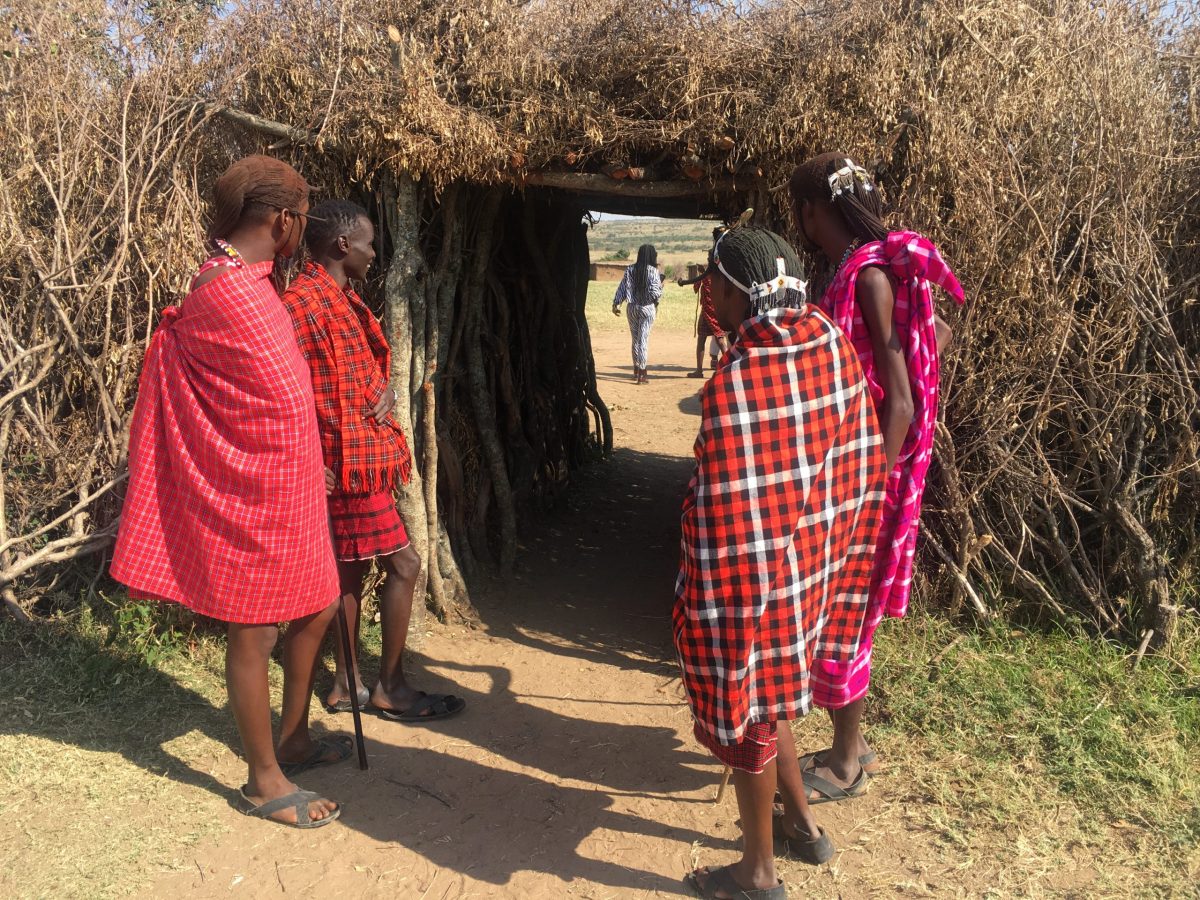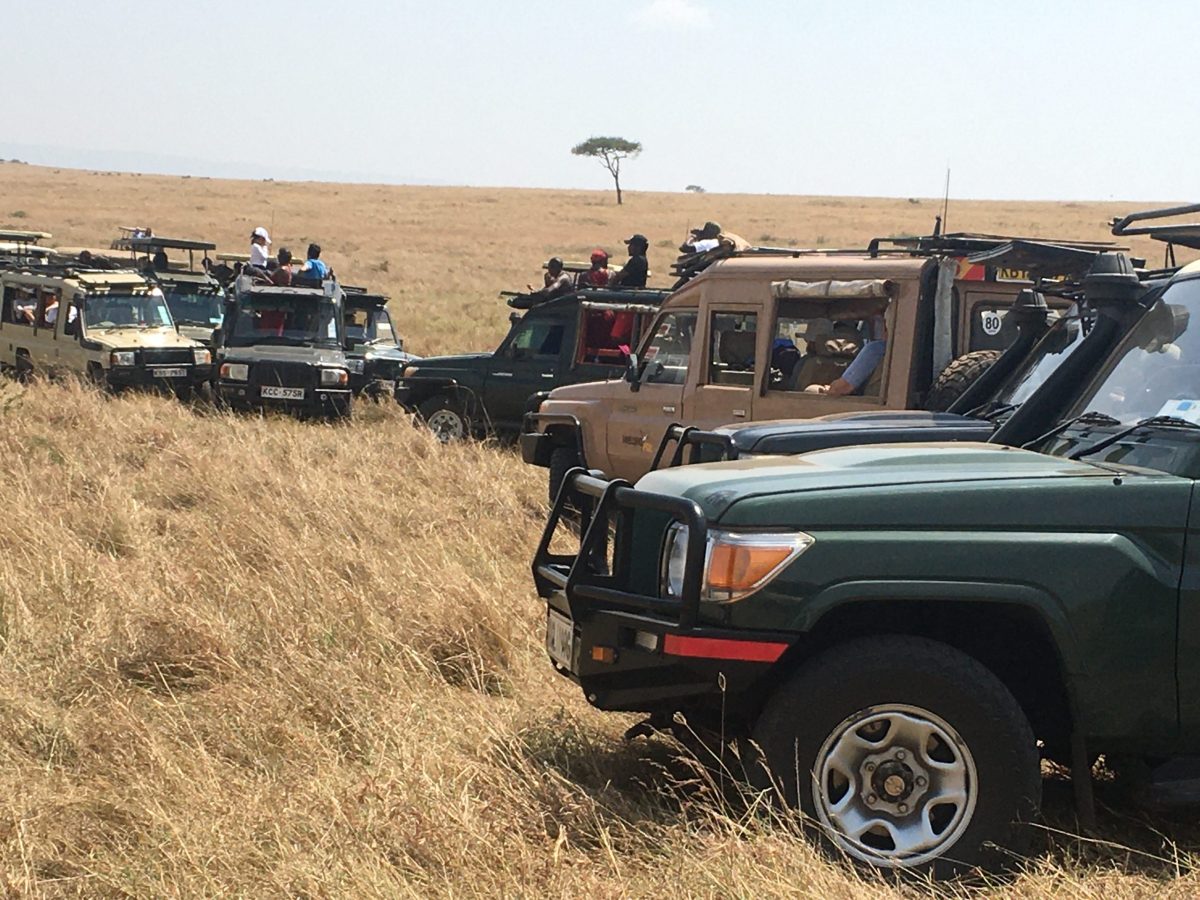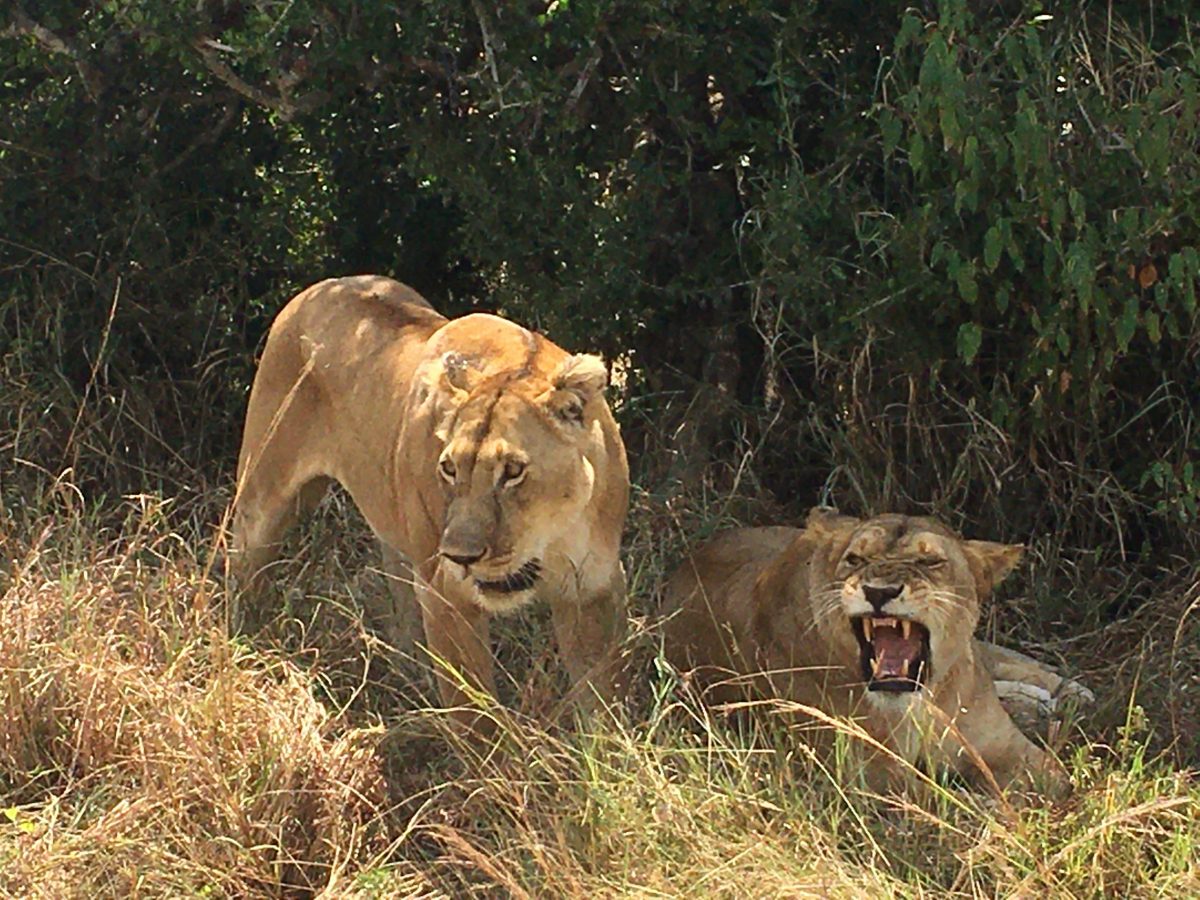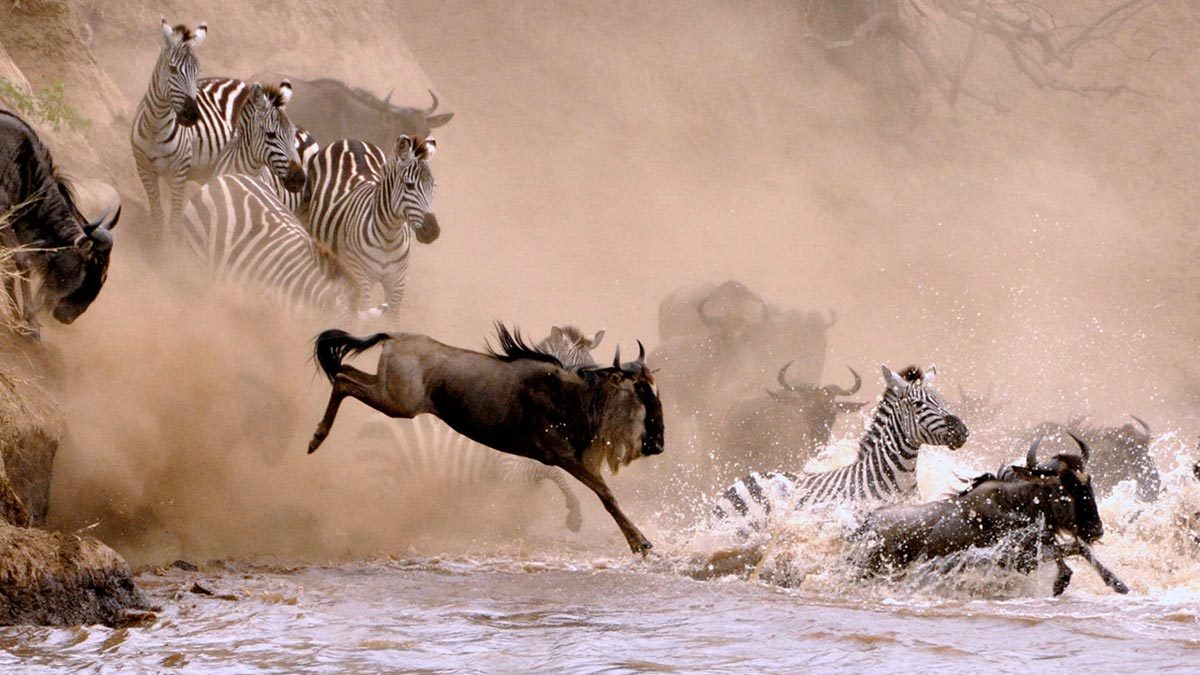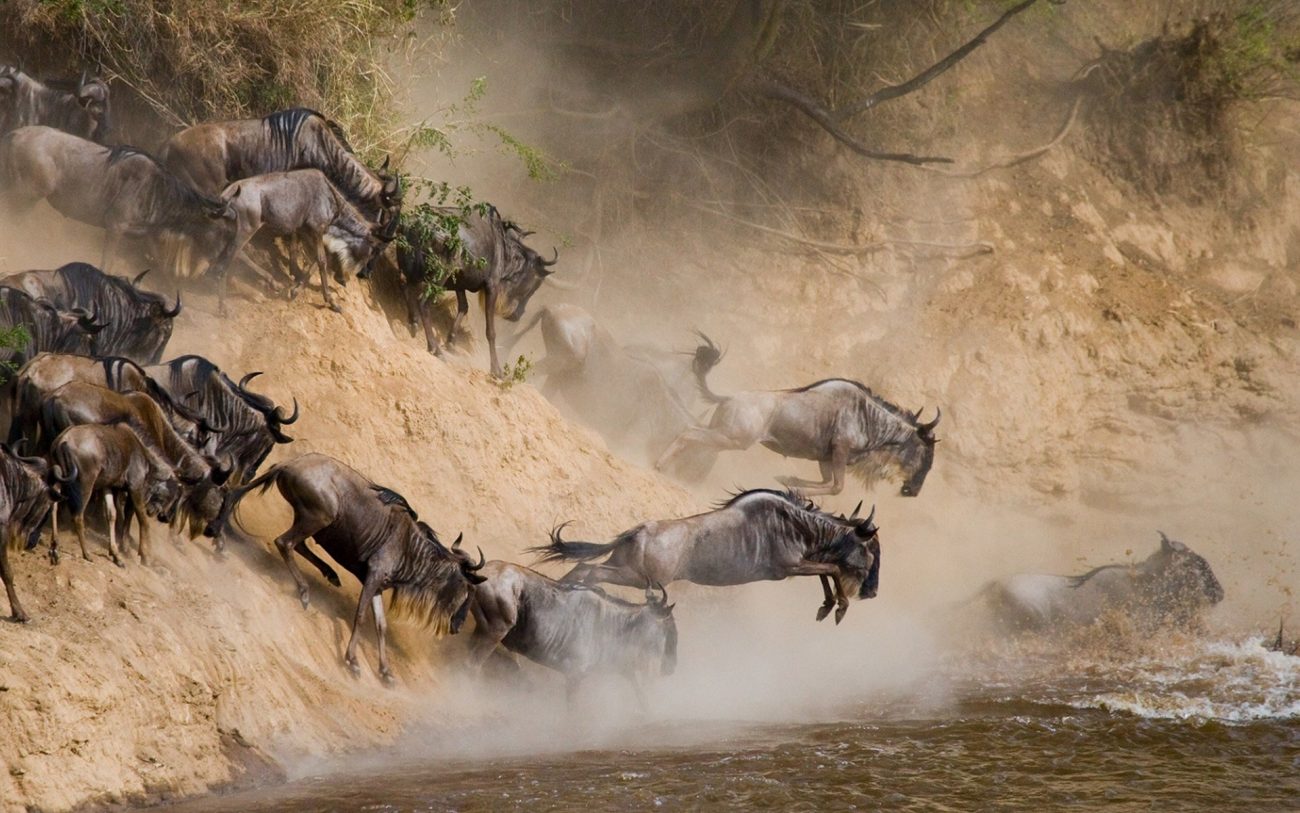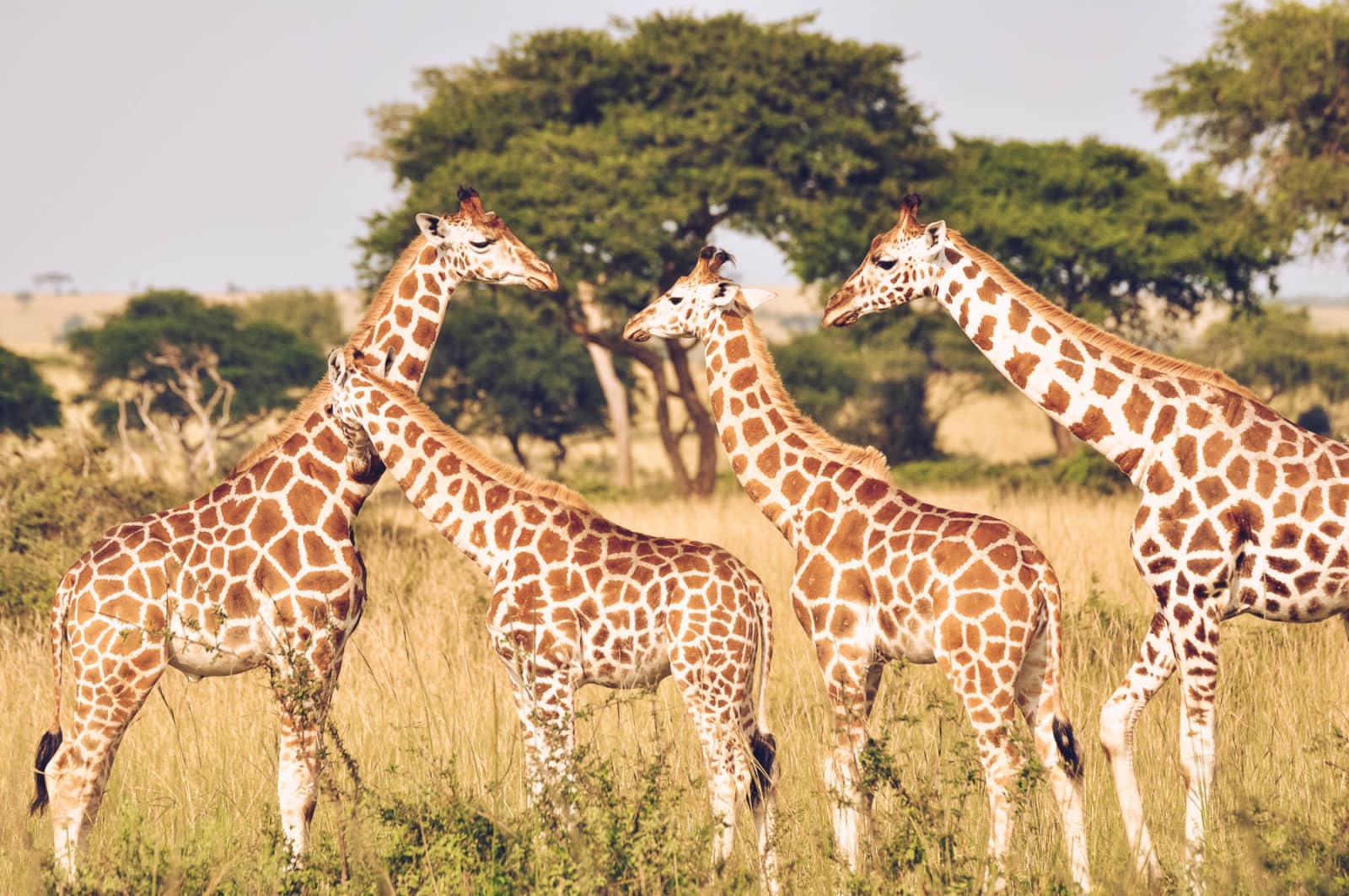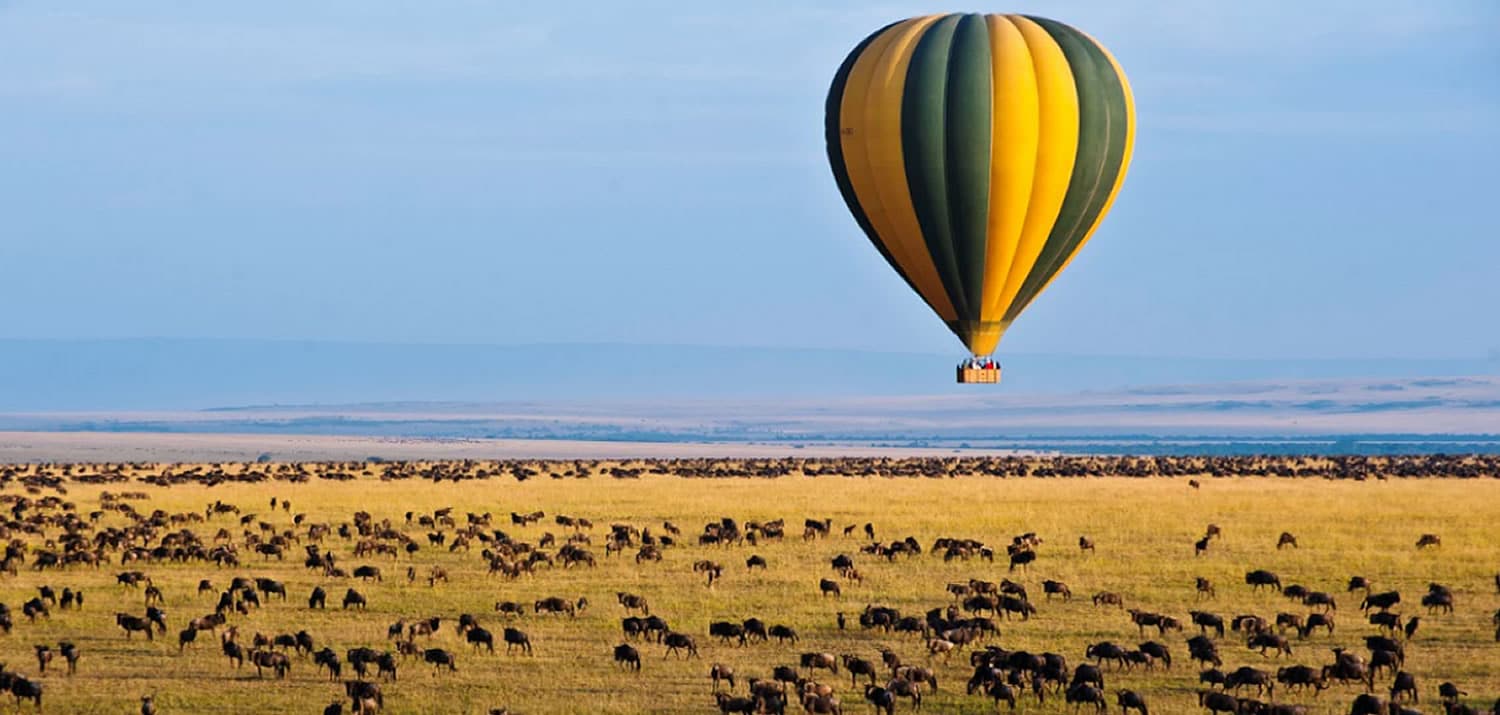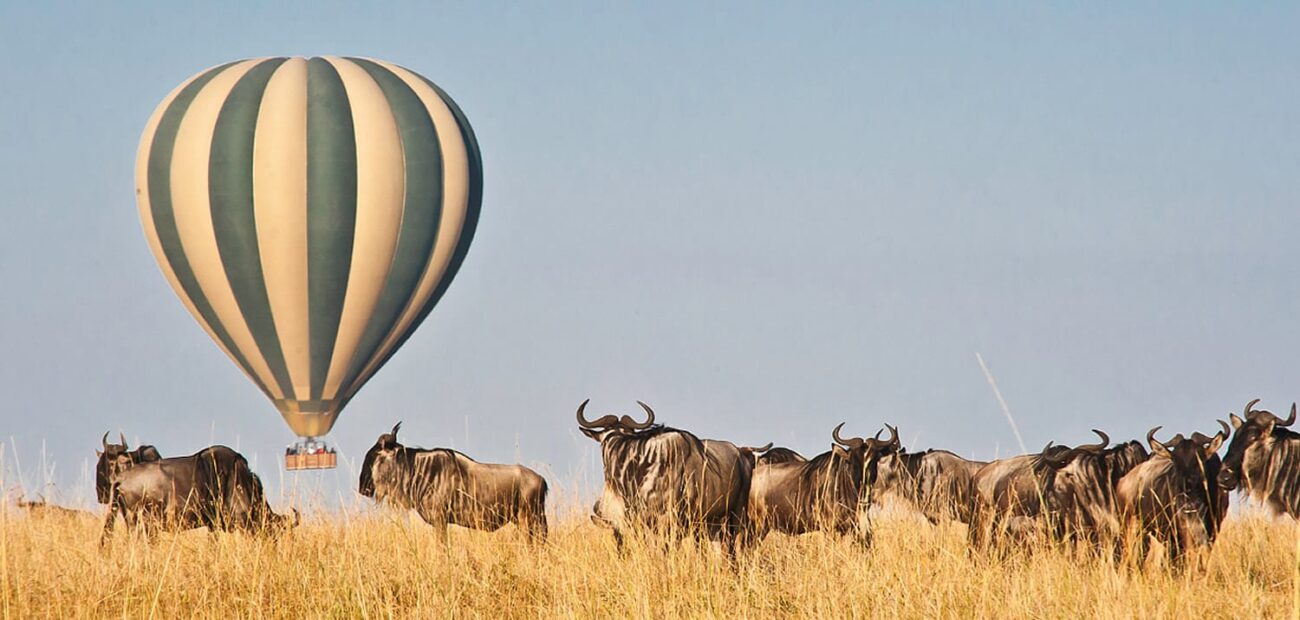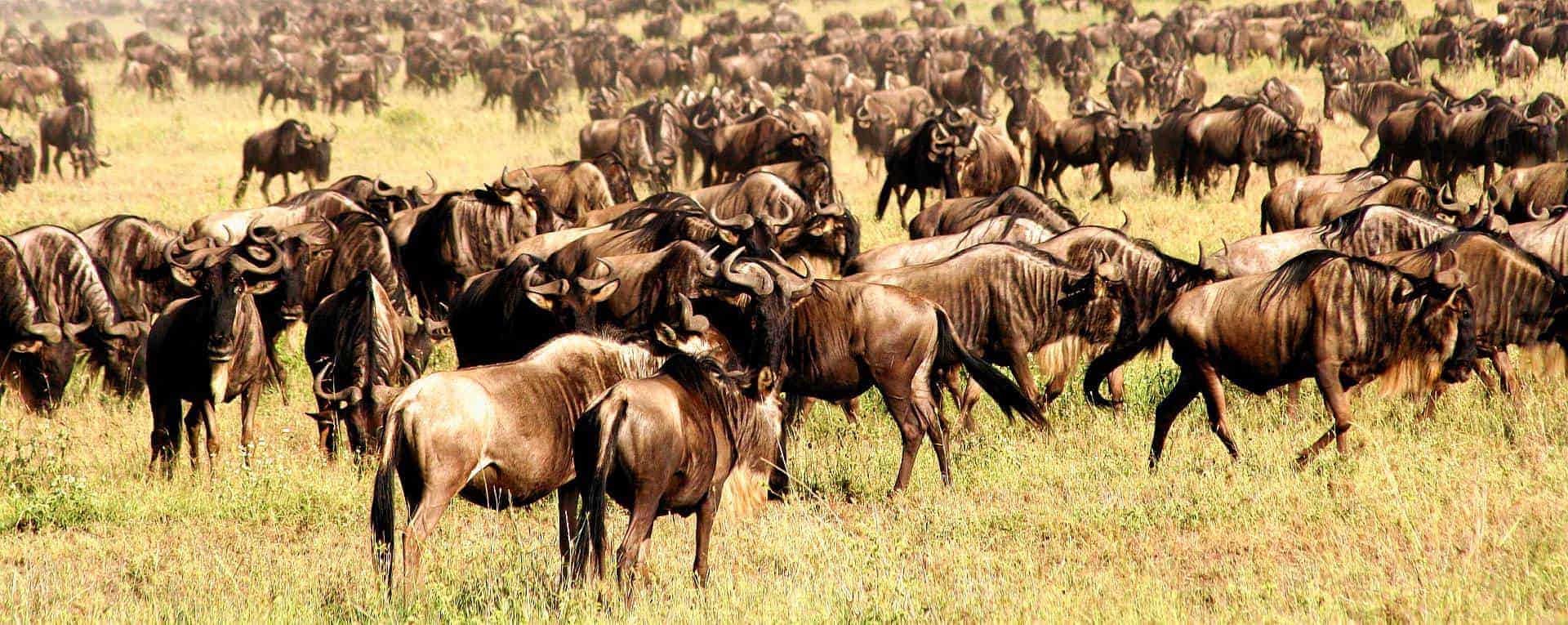Serengeti National Park – All You Need to Know BEFORE You Go (with Photos & Videos)
Serengeti National Park is a renowned wildlife reserve located in the northern part of Tanzania, East Africa. It is one of the most famous and oldest national parks on the continent, and it spans approximately 14,750 square kilometers (5,700 square miles). The park is best known for its vast, sweeping plains, which host the annual migration of millions of wildebeest, zebras, and other herbivores.
The Serengeti is home to one of the most spectacular natural events on Earth—the Great Migration. This migration involves the constant movement of large herds of wildebeest, zebras, and other herbivores in search of fresh grazing and water. This phenomenon is a significant draw for tourists and wildlife enthusiasts.
It is rich in biodiversity, with a diverse array of wildlife. Apart from wildebeest and zebras, the Serengeti is home to the “Big Five” (lion, leopard, elephant, buffalo, and rhinoceros), cheetahs, giraffes, hippos, crocodiles, and a wide variety of bird species.
Overall, Serengeti National Park is not only a crucial area for wildlife conservation but also a stunning destination for those seeking an unforgettable Tanzania safari experience in East Africa.
What is the Location of Serengeti National Park?
Serengeti National Park is located in the northern part of Tanzania, East Africa. It spans a vast area, extending to approximately 14,750 square kilometers (5,700 square miles). The park is part of the larger Serengeti ecosystem, which includes the Ngorongoro Conservation Area, Maswa Game Reserve, and other protected areas. The Serengeti is bordered to the north by Kenya and the Maasai Mara National Reserve. The park is easily accessible by road and air, with various entry points and airstrips for visitors. The closest major town is Arusha, which is a common starting point for Tanzania safaris to the Serengeti.
What to Adventure in Serengeti National Park?
Serengeti National Park offers a wide range of adventures for visitors, making it a premier destination for wildlife enthusiasts and nature lovers.
- Great Migration Tanzania safaris
- Balloon Tanzania safaris
- Big Five Encounters
- Cheetah and Wild Dog Tracking
- Nature Walks and Bush Walks
- Guided Walking Tanzania safaris
- Maasai Villages
- Photography Tanzania safaris
- Bird Watching
- Night Game Drives
Remember to plan your adventure according to the seasons, as the Great Migration’s timing can vary. Whether you choose to explore the Serengeti by vehicle, on foot, or from the air, the park offers an unforgettable experience with its incredible biodiversity and natural wonders.
Enjoy Great Wildlife Migration Tanzania safaris in Serengeti National Park
Experiencing the Great Migration in Serengeti National Park is truly a once-in-a-lifetime adventure. The migration is a natural spectacle where millions of wildebeest, zebras, and other herbivores move across the plains in search of fresh grazing grounds and water. To make the most of your Great Migration Tanzania safari in the Serengeti, consider the following tips.
The Great Migration is a year-round phenomenon, but the timing can vary. The wildebeest typically calve in the southern Serengeti from January to March, and the herds move northward from April to June. July to September is the peak migration season in the northern Serengeti and the Maasai Mara in Kenya.
Select accommodations strategically based on the migration season. Staying in mobile camps that move with the herds or in lodges located in key migration areas can enhance your wildlife viewing opportunities.
By planning your Great Migration Tanzania safari with these considerations in mind, you increase your chances of witnessing one of the most incredible wildlife spectacles on the planet in the Serengeti National Park.
Experience Hot Air Balloon Tanzania safaris in Serengeti National Park
Experiencing a hot air balloon Tanzania safari in Serengeti National Park is a unique and exhilarating way to witness the stunning landscapes and wildlife of this iconic African destination.
Hot air balloon Tanzania safaris typically take place early in the morning, offering breathtaking views of the sunrise over the Serengeti plains. The calm morning air is ideal for balloon flights.
Soaring above the Serengeti in a hot air balloon provides a panoramic view of the landscape, including the vast grasslands, acacia trees, and wildlife below. It’s a fantastic opportunity for photography.
While you won’t get as close to wildlife as you would on a ground-based Tanzania safari, you’ll have the chance to spot animals from a unique vantage point. Elephants, giraffes, and other animals can often be seen from the air.
Hot air balloon Tanzania safaris offer a peaceful and serene experience. The silence of the balloon flight allows you to appreciate the natural sounds and beauty of the environment.
Experiencing the Serengeti from the basket of a hot air balloon is a magical and unforgettable adventure. It offers a different perspective on the landscape and wildlife, making it a highlight of any visit to Serengeti National Park.
Big Five (5) Encounters in Serengeti
The “Big Five” refers to a group of iconic and highly sought-after animals in African wildlife. Serengeti National Park is home to all of the Big Five, making it an incredible destination for wildlife enthusiasts.
Serengeti is renowned for its large population of lions. These majestic big cats can often be spotted resting in the shade of acacia trees or on rocky outcrops, or they may be seen on the move during a hunt. Central Serengeti and Seronera Valley are known for good lion sightings.
Leopards are more elusive compared to lions, but the Serengeti provides suitable habitats for these elusive cats. They are often found near riverbanks and in the acacia woodlands. The Moru Kopjes and Seronera Valley are known leopard hotspots.
The Serengeti is home to a population of African elephants. They can be seen grazing on the plains or moving through wooded areas. The Seronera region and the northern parts of the park are known for elephant sightings.
African buffalos are also present in the Serengeti. They are often found in large herds grazing on the grasslands. The central and southern parts of the park, as well as the Seronera Valley, are good places to encounter buffalo.
Both black and white rhinoceros populations exist in the Serengeti, but rhino sightings are relatively rare due to their low numbers and the vast size of the park. Conservation efforts are ongoing to protect and increase rhino populations.
- Lions
- Leopards
- Elephants
- Buffalos
- Rhinoceros
Enjoy Cheetah and Wild Dog Tracking in Serengeti
Tracking cheetahs and wild dogs in Serengeti National Park can be an exciting and rewarding experience. Both species are fascinating predators, known for their speed and unique social behaviors.
Engage the services of experienced local guides who are knowledgeable about the behavior and habitats of cheetahs and wild dogs. Their expertise significantly increases the chances of successful tracking.
Cheetahs are often found in open grasslands, and the Serengeti’s expansive plains provide an ideal habitat. The southern Serengeti and central areas, such as the Seronera Valley, are known for good cheetah sightings.
African wild dogs, also known as African painted dogs, tend to roam over larger areas. Look for them in woodlands and open plains. The northern and western regions of the Serengeti, including areas near the Grumeti River, are known for wild dog sightings.
Participate in game drives during the early morning or late afternoon when wildlife is more active. Cheetahs are known for their daytime hunting, while wild dogs may be active at various times of the day.
Enjoy Nature Walks and Bush Walks in Serengeti National Park
While traditional game drives are the primary mode of Tanzania safari in Serengeti National Park, some areas within the park offer guided nature walks or bush walks as well.
Nature walks in the Serengeti are typically led by experienced and armed guides who are knowledgeable about the flora, fauna, and safety in the area. Follow their instructions closely for a safe and enjoyable experience.
Some areas within the Serengeti, especially private concessions and certain camps or lodges, offer guided walks. These areas are carefully chosen to ensure safety and a rich natural experience.
A nature walk allows you to appreciate the smaller details of the ecosystem, from tracking animal footprints to identifying different plant species. Guides often share insights into the medicinal uses of plants and the interconnectedness of the ecosystem.
The Serengeti is home to a diverse range of bird species. On a nature walk, you can focus on bird watching and learn about the various birds that inhabit the region.
Always follow the guidelines provided by your guide, as well as any rules and regulations set by the park authorities. Nature walks provide a unique and intimate perspective of the Serengeti’s natural beauty, allowing you to connect more closely with the environment and its inhabitants.
Visit the Maasai Villages in Serengeti National Park
While the primary focus of Serengeti National Park is its abundant wildlife and natural wonders, you can also experience cultural encounters by visiting Maasai villages in the surrounding areas. The Maasai people are a semi-nomadic ethnic group with a rich cultural heritage, and interactions with them can add a unique dimension to your Serengeti experience.
Approach the visit with respect for the local culture and traditions. The Maasai have a distinct way of life, and it’s important to be culturally sensitive during your interactions.
If possible, arrange for a local Maasai guide to accompany you. They can provide valuable insights into the Maasai way of life, explain traditions, and facilitate communication.
Learn a few basic greetings in the Maasai language (Maa) to show respect. The Maasai appreciate visitors who take an interest in their culture. Before taking photographs or entering someone’s home, ask for permission. Not everyone may be comfortable with being photographed, and it’s essential to respect their privacy.
Some Maasai villages offer cultural activities such as traditional dances, beadwork demonstrations, and storytelling. Participate in these activities to gain a deeper understanding of Maasai culture.
Keep in mind that the Maasai villages near Serengeti may receive a significant number of visitors, so your impact should be positive and respectful. Learning about and appreciating the Maasai culture can enhance your overall Tanzania safari experience in the Serengeti National Park.
Enjoy Photography Tanzania safaris in Serengeti National Park
Photography Tanzania safaris in Serengeti National Park offer a fantastic opportunity to capture stunning images of the diverse wildlife and breathtaking landscapes.
Bring a digital camera with a good zoom lens. A DSLR or mirrorless camera with interchangeable lenses can provide more flexibility for different shooting conditions. Ensure you have sufficient memory cards and extra camera batteries. Consider bringing a tripod for stability, especially during low-light conditions.
Take advantage of the beautiful natural light during the golden hours—early morning and late afternoon. The soft, warm light enhances the colors and textures of the landscape and wildlife. Wildlife photography often requires patience. Spend time observing animal behavior and anticipate moments to capture unique shots.
Be ready for unexpected moments, such as a predator’s hunt or animal interactions. Pay attention to composition principles, such as the rule of thirds, leading lines, and framing. These can help create visually appealing and well-balanced photographs. Experiment with different perspectives and angles to add variety to your shots.
Remember to immerse yourself in the moment and enjoy the experience beyond the lens. Balancing photography with being present in the natural surroundings enhances the overall Tanzania safari experience in Serengeti National Park.
Go Birding in Serengeti National Park
Serengeti National Park is not only a haven for large mammals but also offers rich birding opportunities. The park is home to a diverse array of bird species, making it an excellent destination for bird watching enthusiasts.
Birding can be rewarding throughout the year, but the best time for birding in the Serengeti is during the wet season (November to April). This is when migratory birds arrive, and bird activity is at its peak.
Explore different ecosystems within the park, including grasslands, woodlands, and riverine areas. Each habitat attracts a unique set of bird species. The Seronera Valley, Grumeti River, and areas around the Retima Hippo Pool are known for diverse birdlife.
Binoculars are essential for observing birds from a distance. A good field guide specific to East African birds can help you identify and learn more about the species you encounter.
Birding in the Serengeti adds another layer of enjoyment to your Tanzania safari experience, allowing you to appreciate the park’s biodiversity beyond its iconic mammals.
What is so special about Serengeti National Park?
Serengeti National Park is considered one of the most special and iconic wildlife destinations in the world. Several factors contribute to its uniqueness and make it a must-visit for nature enthusiasts and Tanzania safari-goers.
The annual Great Migration is one of the most spectacular wildlife events on the planet. Millions of wildebeest, zebras, and other herbivores migrate across the vast Serengeti plains, crossing rivers and facing predators. This natural phenomenon is a breathtaking display of nature’s cycles.
Serengeti is home to an incredibly diverse range of wildlife, including the “Big Five” (lion, leopard, elephant, buffalo, and rhinoceros). The park’s varied ecosystems support a rich tapestry of flora and fauna.
The park’s landscapes include vast savannas, acacia woodlands, rocky outcrops (kopjes), and riverine forests. This diversity of habitats contributes to the park’s high biodiversity and offers a range of stunning backdrops for wildlife photography.
- Great Migration
- Abundance of Wildlife
- Landscape Diversity
- Cultural Heritage
- UNESCO World Heritage Site
- Wildlife Conservation Success
- Hot Air Balloon Tanzania safaris
- Migration of Birds
- Ethical Tourism Practices
- Accessibility
- Photographic Opportunities
- Conservation Research
The combination of these factors makes Serengeti National Park an extraordinary destination that appeals to nature lovers, conservationists, photographers, and anyone seeking a profound connection with the natural world.
How much is a Tanzania safari in Serengeti National Park?
The cost of a Tanzania safari in Serengeti National Park can vary widely depending on several factors, including the type of Tanzania safari, accommodation standards, duration, time of year, and Deks Tours.
The type of Tanzania safari you choose influences the cost. Options include budget camping Tanzania safaris, mid-range lodge Tanzania safaris, luxury tented camps, and high-end luxury lodges. Luxury options generally come with a higher price tag.
Accommodation standards significantly impact the cost. Basic camping accommodations are usually more budget-friendly, while upscale lodges and luxury tented camps command higher prices.
The length of your Tanzania safari affects the overall cost. Longer Tanzania safaris typically incur higher costs due to additional days of accommodation, meals, and guide services.
The timing of your Tanzania safari can influence costs. Peak season, which aligns with the Great Migration, tends to be more expensive. Shoulder seasons may offer lower prices, but wildlife viewing conditions can vary.
How many wildebeests are in Serengeti Park?
The population of wildebeests in Serengeti National Park is dynamic and varies throughout the year due to the Great Migration. The Great Migration is a natural phenomenon where millions of wildebeests, along with zebras and other herbivores, move in a circular pattern between the Serengeti National Park in Tanzania and the Maasai Mara National Reserve in Kenya in search of fresh grazing grounds and water.
The wildebeest population in the Serengeti is estimated to be around 1.3 million to 1.5 million during the calving season, which typically occurs in the southern Serengeti from January to March. During the migration, the population swells as the herds move northward, and at its peak, the migration can include several million wildebeests.
It’s important to note that these population estimates are approximations, and the numbers can fluctuate based on factors such as weather conditions, food availability, and the movement patterns of the herds. Conservation organizations and researchers use various methods, including aerial surveys, to estimate the population of wildebeests and other wildlife in the region.
Is Serengeti bigger than Masai Mara?
The Serengeti National Park in Tanzania is larger than the Maasai Mara National Reserve in Kenya. The Serengeti is one of the largest and most famous wildlife conservation areas in the world, covering approximately 14,750 square kilometers (5,700 square miles). It is part of a larger ecosystem that includes protected areas beyond the national park boundaries.
On the other hand, the Maasai Mara National Reserve in Kenya is smaller, covering an area of about 1,510 square kilometers (580 square miles). The Maasai Mara is contiguous with the Serengeti, and during the annual Great Migration, wildlife, including wildebeests and zebras, move between these two regions.
While both the Serengeti and the Maasai Mara are renowned for their incredible wildlife, unique landscapes, and the Great Migration, the Serengeti’s larger size allows for a more extensive range of habitats and diverse ecosystems within the park.
What is the most common animal in the Serengeti?
The most common animal in the Serengeti is likely the wildebeest, specifically the blue wildebeest (Connochaetes taurinus). Wildebeests are herbivores and are part of the antelope family. They are known for their distinctive appearance, characterized by a robust build, curved horns, and a dark mane. Wildebeests are highly social animals and often travel in large herds.
The Serengeti is home to a massive population of wildebeests, and their numbers swell significantly during the annual Great Migration. The migration involves millions of wildebeests, along with zebras and other herbivores, moving across the plains in search of fresh grazing grounds and water. This remarkable natural phenomenon is one of the key attractions of the Serengeti, drawing visitors from around the world to witness the spectacle.
Apart from wildebeests, the Serengeti boasts an incredible diversity of wildlife, including other herbivores like zebras, gazelles, and buffalos, as well as predators such as lions, leopards, and cheetahs. The park is also home to numerous bird species, making it a well-rounded destination for wildlife enthusiasts.
How many days do you need for Serengeti Tanzania safari?
The ideal duration for a Serengeti Tanzania safari can vary based on personal preferences, interests, and the specific activities you want to undertake. However, a general recommendation is to plan for a minimum of 3 to 5 days to fully experience the richness of the Serengeti ecosystem.
If witnessing the Great Migration is a priority, you’ll need to plan your visit during the migration season, typically from November to July, depending on the location of the herds at any given time.
A longer Tanzania safari allows for more time to observe wildlife behavior, including predator-prey interactions, animal migrations, and other natural activities.
If you are passionate about wildlife photography, additional days provide more opportunities to capture diverse scenes, lighting conditions, and animal behaviors.
While 3 to 5 days is a common recommendation, some visitors choose to extend their stay for a week or more, especially if they want a comprehensive experience that includes exploring different regions within the Serengeti. Ultimately, the duration of your Tanzania safari is a personal choice, and you should plan based on your preferences, budget, and the experiences you wish to prioritize.
What are 5 interesting facts about the Serengeti Park?
Certainly! The Serengeti National Park is a fascinating and iconic destination with a rich natural history. The Serengeti is home to one of the most spectacular wildlife events on Earth—the Great Migration. This annual migration involves millions of wildebeests, zebras, and other herbivores moving in a circular pattern between the Serengeti in Tanzania and the Maasai Mara in Kenya in search of fresh grazing grounds and water. The migration is a remarkable display of nature’s cycles and a key attraction in the park.
- Great Migration
- UNESCO World Heritage Site
- Size and Diverse Ecosystems
- Rich Predatory Population
- Ancient Human History
These facts only scratch the surface of the Serengeti’s complexity and importance in the natural world. The park’s stunning landscapes, diverse wildlife, and cultural heritage make it a must-visit destination for those seeking an immersive Tanzania safari experience.
Luxury Africa Tours & Holidays – Deks Safaris and Tours Ltd
- 6 Days Uganda Kenya Tour
- 7 Days Rwanda Uganda Tour
- 8 Days Kenya Uganda Luxury Safari
- 8 Days Kenya Uganda Tour
- 9 Days Kenya Uganda Safari
- 10 Days Kenya Uganda Safari
- 10 Days Uganda Kenya Tanzania Safari
- 10 Days Rwanda Kenya Tanzania Safari
- 11 Days Kenya Uganda Rwanda Safari
- 11 Days Kenya Uganda Safari
- 11 Days Uganda Kenya Zanzibar Safari
- 11 Days Rwanda Kenya Safari
- 12 Day Kenya Uganda Rwanda Safari
- 13 Days Uganda Kenya Tanzania Safari
- 14 Days Across Africa Safari
- 14 Days Rwanda Tanzania Safari
- 15 Days Kenya Rwanda Tour
- 16 Days Kenya Uganda Safari

